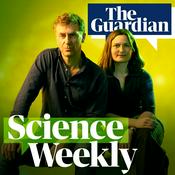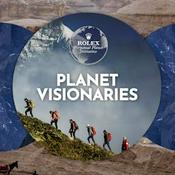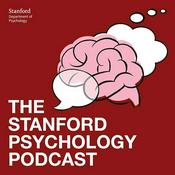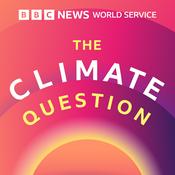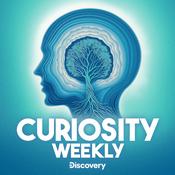131 episodes

116. The Gulf as One System: Bahrain's Aerospace Ecosystem
12/18/2025 | 48 mins.
The Gulf as One System: Bahrain's Aerospace EcosystemMany organizations get too big to succeed. Bahrain is small enough to call the minister and align an ecosystem over coffee. That's not a limitation—it's infrastructure. Leena Faraj spent a decade proving that relationship density beats bureaucratic scale. One island. Neighbors who outspend you ten to one. The puzzle: how do you win when you can't win the resource game? The answer: don't fight for the whole trip—win the increment. For some, Bahrain may not be big enough for two-week stays. But "pop in for a couple of days" works when the Gulf operates as one system. Regional partnerships turn constraints into market expansion.The method: incubate what government can't control, prove it works, and hand it back. Tamkeen for SMEs. Mumtalakat—the sovereign fund whose subsidiaries now include McLaren. Airport operations are separated from the regulator. Ten years of lobbying later: Bahrain's first National Aviation Strategy.Paradigm Shifts:📌 Too Big to Succeed: Giants have resources. Small nations have relationship density. Boardrooms ratify what coffee conversations already decided. Informal alignment is infrastructure.📌 Incubate → Prove → Hand Back: Strategic incubation isn't empire-building. Build entities that demonstrate the model, then reintegrate. Success is measured by handoff, not headcount. 📌 Win the Increment: Can't capture the whole market? Capture the margin. Micro-stays, seamless visas, regional coordination. Partnership expands the pie; rivalry fights over crumbs.📌 If It Were Your Money: One question transforms ecosystem accountability. Subsidies create dependency. Investor mindset builds muscle.Operational Impact:📌 Plans Are Hypotheses: Paper lies, ground reveals. "The plan is not a Bible." Implementation challenges often turn out to be opportunities paper couldn't predict.📌 Private Sector → Ministry: Bahrain rotates private sector leaders into government. They know what went wrong. Execution DNA cross-pollinates.📌 Common Sense Isn't Common: The gap between what's obvious and what organizations do—that's where orchestrators create value.📌 Failure as Curriculum: "Failure is part of your learning journey." Build tolerance into entrepreneurial development. Muscle grows under load.Strategic Reframe:Constraints aren't obstacles to strategy—they are the strategy. Forced niche clarity enables differentiation that giants can't match. As organizations scale, those who preserve informal alignment out-execute those who rely solely on governance. The future belongs to ecosystems small enough to align and networked enough to compound.Guest: Leena Faraj, Head of Strategy, Bahrain Airport Company | Vice Chair, ACI Economic CommitteeHost: Dyan Finkhousen, Founder & CEO, Shoshin WorksSeries Hosts: Dyan Finkhousen, Founder & CEO, Shoshin Works Vikram Shyam, Futurist, NASAEcosystemic Futures is the Shoshin Works foresight series with NASA heritage.

115. The 'D' Got Deleted: How VC Funding Broke the Innovation Ecosystem
12/11/2025 | 45 mins.
The 'D' Got Deleted: How VC Funding Broke the Innovation EcosystemLast week's whitepaper isn't production-ready. But someone's already pitching it to your board. Kence Anderson has deployed 100+ autonomous AI systems for Fortune 500 companies—and watched venture capital create a research-to-PR pipeline that skips development entirely. The 'D' in R&D got deleted. Hype cycles got amplified.Rule-based AI—systems encoding expertise as decision logic—was the 1980s breakthrough. Overhyped, then abandoned when it couldn't do everything. But engineers kept deploying it where codified rules excel: industrial controls, diagnostics, compliance. It's running critical infrastructure today. Every AI wave follows this arc. For leaders, the lesson: stop asking which technology wins. Ask what each does well—and build modular systems that match capabilities to tasks. The fix: if AI can learn, someone should teach it the right way. Machine teaching—goals, scenarios, strategies—creates modular agents that compound capability through orchestration.Paradigm Shifts:📌 Components > Algorithms: LLMs excel at language. Reinforcement learning excels at practice. Engineering matches superpowers to tasks.📌 Methodology Before Platform: Databases required relational algebra before SQL scaled. Autonomous AI requires machine teaching before platforms compound.📌 Teaching > Training: Every intelligence requires instruction. Practice without pedagogy is noise. 📌 Swarms Beat Battleships: In an AI naval competition, one giant ship won—then got banned. The algorithm responded with 100,000 tiny ships and overwhelmed everyone. Distributed beats concentrated. Shopify vs. Amazon.📌 Distributed but Interoperable: Winning economies build decentralized, self-healing innovation units. Losing economies calcify around monoliths.Operational Impact:📌 Research-to-PR Pipeline: When government labs led innovation, development preceded deployment. VC filled the gap but deleted the rigor.📌 Hierarchical Orchestration: Supervisor agents directing specialized agents produce explainability swarms can't. Top-down orchestration enables traceability.📌 Human-AI Teaming: Teams of agents and humans beat both alone. Experts teach agents; agents teach novices. Capability compounds bidirectionally.📌 Space Forces the Issue: Harsh environments demand self-healing, modular systems. Manufacturing principles translate to orbital operations.Strategic Reframe:What's the superpower of each component? How do modular pieces orchestrate into systems that perform? Restore the 'D.' Ecosystems that develop escape the trough. Hype machines fall in.Guest: Kence Anderson, CEO & Founder, AMESA | Author, Designing Autonomous AISeries Hosts: Dyan Finkhousen, Founder & CEO, Shoshin Works | Vikram Shyam, Futurist, NASAEcosystemic Futures is the Shoshin Works foresight series with NASA heritage.

114. Stack or Stall: Why Credentials Collapse but Ecosystems Compound
12/03/2025 | 46 mins.
Stack or Stall: Why Credentials Collapse but Ecosystems CompoundLast year's Chemistry Nobel went to non-chemists. The lasting power of domain-specific credentials is collapsing - but David Julian has seen this pattern before across four technological revolutions and knows what compounds instead. From Hotjobs.com to Google's global EdTech partnerships, Julian identified what separates transformative innovations from footnotes: they teach users something new, reduce friction, and fundamentally improve lives. Now on Harvard's Galileo Project steering committee, he's applying ecosystem logic to AI-powered astrophysics - and discovering why stacking beats selecting.The insight: Skills stack. Modular, complementary, and interoperable capabilities stack. Liberal arts + AI certifications compound income dramatically. Universities aren't obsolete - their business models are. Survivors become platforms for compounding, not gatekeepers of credentials.Paradigm Shifts:📌 Stack, Don't Select: Psychology degree + data analytics certification = dramatically higher median income. Critical thinking + immediate employability. Ecosystems reward combination, not specialization.📌Outcomes > Access: Measure completion, not enrollment.📌Curiosity Compounds: Space, science, and AI unify across divisions. Galileo Project inspires regardless of conclusions - serious anomaly inquiry advances physics, materials, and propulsion.📌Revolution Patterns: Search democratized information. Smartphones democratized computing. Social democratized community. AI democratizes research-grade analysis. Each wave rewired ecosystems.Operational Impact:📌 Pre-K to Gray: EdTech isn't digitizing classrooms - it's lifelong capability building across universities, companies, and workforce organizations.📌Global Context: Limited broadband markets require light apps. Infrastructure constraints determine adoption - not features.📌Ecosystem Leverage: App stores became digital malls. Platforms that enable third-party value to outlast those that hoard capabilities.📌Validation Gap: AI democratized skills, not credentialing. Universities still provide third-party validation that employers trust, but that trust is eroding. Whoever solves verification at scale wins.Strategic Reframe:Today's AI gold rush mirrors the dot-com era: everyone senses transformation, few recognize patterns. Then, as now, credentials collapse when they can't compound. Ecosystems compound when they enable stacking. The question: are you building stackable value into interconnected networks, or hoarding static credentials in isolated silos?Guest: David Julian, Former Head of Industry, EdTech, Google | Steering Committee, Harvard Galileo ProjectHost: Dyan Finkhousen, Founder & CEO, Shoshin WorksSeries Hosts:Vikram Shyam, Founder, Vik Strategic SolutionsDyan Finkhousen, Founder & CEO, Shoshin WorksEcosystemic Futures is the Shoshin Works foresight series with NASA heritage.

113. Engineering Heritage: Transforming Departing Expertise into Operational Capability
11/25/2025 | 42 mins.
Operators with 30 years of pattern recognition leave for competitors. Engineers carrying legacy system intelligence depart. Everyone understands the risk. Few solve the execution: Systematically extracting tacit intelligence that experts can't articulate because it operates below the conscious threshold.Dr. Refiloe Mabaso and Wisdom Ndashe architected what many struggle to build - knowledge-capture systems that function independently of voluntary participation. At ATNS, harvesting is mandated by policy and embedded in workflows. Their "Legends and Beneficiaries" program identifies critical expertise five years before departure, mapping tacit intelligence to next-generation operators through structured protocols. The execution breakthrough: embedding capture into SOPs makes retention automatic. Travel with Purpose demonstrates strategic reach - converting unaccounted expenditures into documented intelligence acquisition with measurable ROI. Cost centers become intelligence operations.Paradigm Shifts:📌 Policy-Mandated > Voluntary: Board-level reporting makes knowledge infrastructure non-negotiable. Embedding capture in SOPs makes participation a requirement.📌 Five-Year Windows: Identify critical expertise years before departure. Tacit knowledge requires time to extract through storytelling and observation.📌 Workflow Embedding: Built into inductions, reviews, and meetings. Automatic retention scales independently of KM capacity.📌 SLAs + Metrics: Department-specific dashboards eliminate generic buy-in. Performance metrics make KM measurable and competitive.Operational Impact:📌 Integration Architecture: FAQs mapped to SMEs. Lessons learned feed dashboards. Domain validation. Systems inform each other, intelligence compounds.📌 Risk-Based Focus: Stakeholder engagement identifies highest-impact domains - concentrating resources where loss matters most.📌 Knowledge-to-Operations: Expertise flows into training curriculum, OJTI programs, technical manuals - not static repositories.📌 Travel Intelligence: TWIP transforms unaccounted budgets into strategic acquisitions with documented ROI - proving value to leadership.Strategic Reframe:Organizations recognize the risk of knowledge loss. Few execute systematic knowledge capture at scale. The differentiator: architecture making harvesting automatic through workflow embedding, policy mandates, and integrated systems that compound intelligence. Five-year windows + department SLAs + competitive metrics = self-sustaining infrastructure.Guests: Dr. Refiloe Mabaso, PhD, Head of Information and Knowledge Management, ATNSWisdom Mcebo Ndashe, Knowledge and Content Management Specialist, ATNSHost: Dyan Finkhousen, Founder & CEO, Shoshin WorksSeries Hosts:Vikram Shyam, Founder, Vik Strategic SolutionsDyan Finkhousen, Founder & CEO, Shoshin WorksEcosystemic Futures is the Shoshin Works foresight series with NASA heritage.Futures, Foresight, Technology, Industry, Society, Policy

112. Accelerating the Hydrogen Stack
11/06/2025 | 55 mins.
Hydrogen infrastructure requires billion-dollar cryogenic systems. That's the conventional wisdom keeping hydrogen grounded. Dr. Jalaal Hayes proved it's wrong—and the implications for expeditionary operations are immediate.Hayes developed Liquid Organic Hydrogen Carriers (LOHC) technology, which stores hydrogen at ambient temperatures using existing fuel infrastructure. No specialized equipment. No cryogenic vulnerability. Combined with biohydrogen production, delivering three times the energy density of JP-8, this isn't an incremental improvement—it's an operational paradigm shift.When you orchestrate complementary technologies instead of betting on single solutions, you eliminate infrastructure dependencies that constrain deployment. For institutions like the DoW, that means hydrogen propulsion without forward-deployed cryogenic facilities.Paradigm Shifts:→ Applied Budgetary Exhaustion: LOHC eliminates billions in cryogenic infrastructure by using existing petroleum systems—the same asymmetric strategy Ukraine uses with $10K drones vs $100M platforms. Attack the cost structure, not the capability.→ Infrastructure Independence: Biohydrogen becomes deployable when paired with ambient-temperature LOHC storage. No cryogenic vulnerability. No specialized tankers. Existing logistics networks carry hydrogen in chemical form—released on demand at the point of use.→ Regional Stack Control = Supply Chain Security: Hayes built his entire prototype with suppliers within driving distance. That's not convenience—it's strategic autonomy. When you control the full stack regionally, you eliminate foreign dependencies and supply chain vulnerabilities.Operational Impact:→ Space-to-Ground Dual-Use: Same hydrogen stack enabling Mars closed-loop life support runs ground ops at forward operating bases. One R&D investment, two critical applications. That's how you maximize constrained budgets.→ Technology Intersection > Selection: Stop forcing teams to pick biohydrogen OR storage OR production. The breakthrough lives where they integrate—each solving the other's deployment constraint. Complementary systems outperform optimized components.→ Compressed Innovation Cycles: Hayes's students solve real commercial prototypes in semesters, not years. Academic-entrepreneurial integration accelerates the transition of capabilities from the lab to the field.Strategic Reframe: Infrastructure dependencies limit operational flexibility. When you orchestrate technologies that leverage existing systems, you eliminate deployment barriers. The question isn't "which hydrogen technology wins?" It's "what combination removes infrastructure constraints from our operational calculus?"Guest: Dr. Jalaal Hayes, CEO & Founder, Evince Inc. | Associate Professor of Chemistry, Lincoln UniversityHost: Dyan Finkhousen, Founder & CEO, Shoshin WorksEcosystemic Futures is the Shoshin Works foresight series with NASA - National Aeronautics and Space Administration heritage.
More Science podcasts
Trending Science podcasts
About Ecosystemic Futures
Listen to Ecosystemic Futures, Radiolab and many other podcasts from around the world with the radio.net app
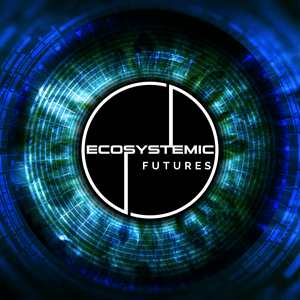
Get the free radio.net app
- Stations and podcasts to bookmark
- Stream via Wi-Fi or Bluetooth
- Supports Carplay & Android Auto
- Many other app features
Get the free radio.net app
- Stations and podcasts to bookmark
- Stream via Wi-Fi or Bluetooth
- Supports Carplay & Android Auto
- Many other app features


Ecosystemic Futures
download the app,
start listening.

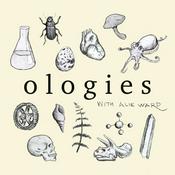

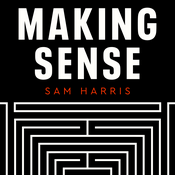

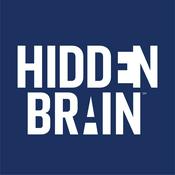
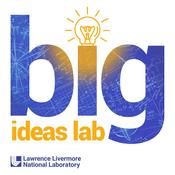

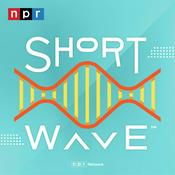

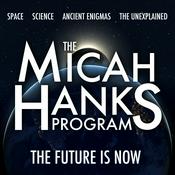

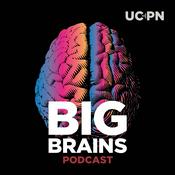
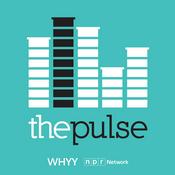

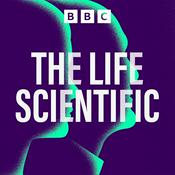

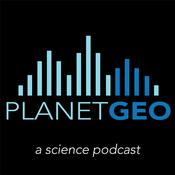

![Podcast Cosmosis [Formerly The UFO Rabbit Hole]](https://www.radio.net/podcast-images/175/the-ufo-rabbit-hole-podcast.jpeg?version=c4cfeed14331265219e0263fd62be755644a8cf4)

